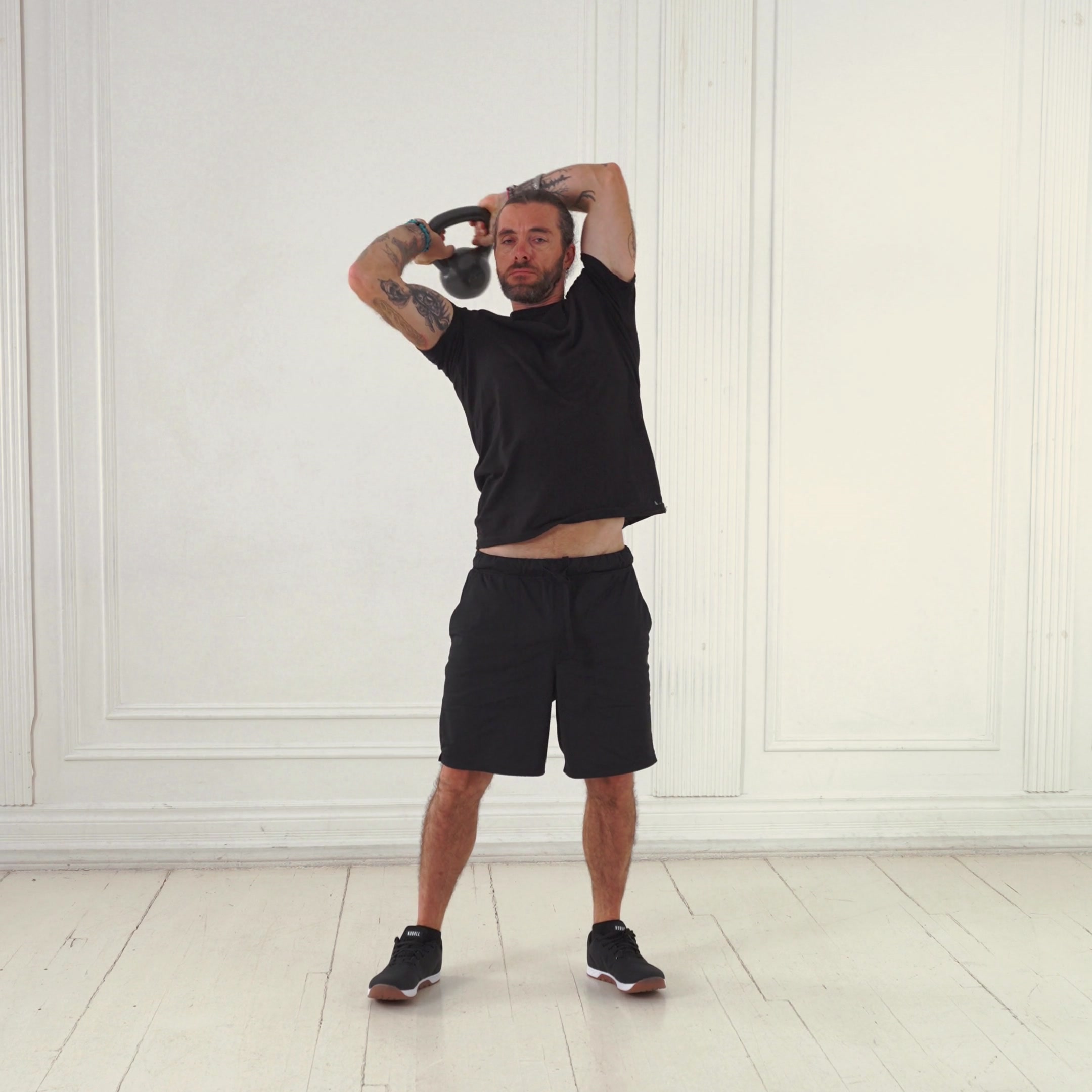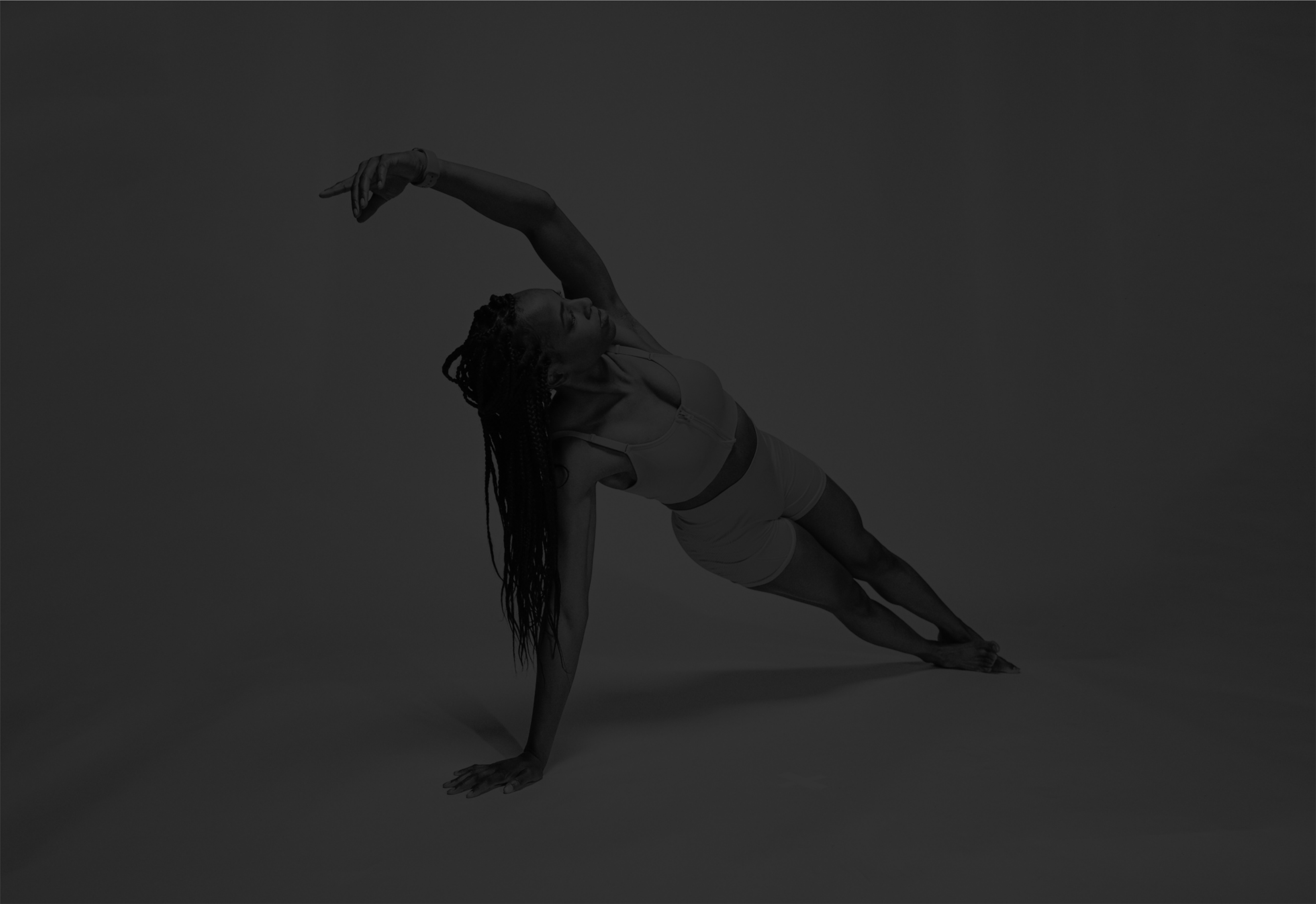Kettlebell Halo
 Auto Detected
Auto DetectedA rotational kettlebell movement circling the head that targets shoulders, upper back, and core to enhance mobility, stability, and shoulder health; commonly used as a warm-up drill.
About Exercise
Equipment
Kettlebell
Difficulty
2/5 • Beginner
Primary Muscle Groups
Shoulders
Secondary Muscles
Triceps, Forearms, Lower Back
Popularity Score
6
Goals
Training Style
Setup Requirements
Requires Rack
No
Requires Bench
No
Requires Spotter
No
Space Needed
Small
Noise Level
Low
Muscle Breakdown
View Muscle MapShoulders
10/10Anterior Delts, Medial Delts, Rear Delts
Abs
7/10Rectus Abdominis, Transverse Abdominis
Obliques
7/10External Obliques, Internal Obliques
Traps
7/10Upper Traps
Triceps
5/10Forearms
4/10Flexors
Lower Back
3/10Erector Spinae
Programming
Typical Rep Range
8-15 reps
Rest Between Sets
30-60 seconds
How to Perform
Stand with feet shoulder-width apart, knees soft, holding kettlebell by horns at chest level with both hands, core braced and spine neutral.
- Inhale and move kettlebell to right side of head in controlled circle.
- Guide kettlebell behind neck, keeping elbows high and close.
- Continue around left side of head without moving your head.
- Return to front at chest level to complete one circle.
- Exhale and reverse direction for next rep, alternating sides.
Coaching Tips
Form Cues
- Core tight
- Elbows close to body
- Head still
- Slow and controlled
- Shoulders relaxed
Breathing
Breathe normally throughout, avoiding breath-holding while maintaining core brace.
Tempo
3-0-3
Range of Motion
Full tight circle around head from chest level, passing close to neck without contact, head stationary.
Safety
Safety Notes
- Start with light weight to master form
- Stop if shoulder pain occurs
- Consult professional for existing shoulder or back issues
- Keep movement smooth to avoid strain
Spotting
Not required; self-supported exercise with no heavy loads.
Common Mistakes
- Arching lower back
- Jerking the weight
- Moving head to follow kettlebell
- Using excessive weight
- Allowing elbows to flare out
When to Avoid
- Acute shoulder impingement
- Lower back pain
- Recent neck injury
Flexibility Needed
- Adequate shoulder flexion and rotation
- Thoracic spine mobility
Build Up First
- Basic posture and core bracing competency
Also known as
KB Halo, Kettlebell Circle
Found this helpful?
Share your thoughts or help us improve this guide.
Similar Exercises

Kettlebell Squat to Halo
Kettlebell
Shoulders

Kettlebell Half Kneeling Single-Arm Press
Kettlebell
Shoulders

Kettlebell Arm Bar
Kettlebell
Shoulders

Kettlebell Push Press
Kettlebell
Shoulders

Kettlebell Clean Press

Kettlebell
Glutes, Shoulders

Kettlebell Front Raise
Kettlebell
Shoulders

Kettlebell Upright Row
Kettlebell
Shoulders

Kettlebell Rear Delt Row
Kettlebell
Shoulders

Kettlebell Seated Press
Kettlebell, Flat Bench
Shoulders

Kettlebell Angled Press
Kettlebell
Shoulders


subscribe to our newsletter
Contact Us
hello@trainfitness.aiFind Us
130 Spadina Avenue, Toronto,
Ontario, M5V 0H4, Canada
©2025 All Rights Reserved
